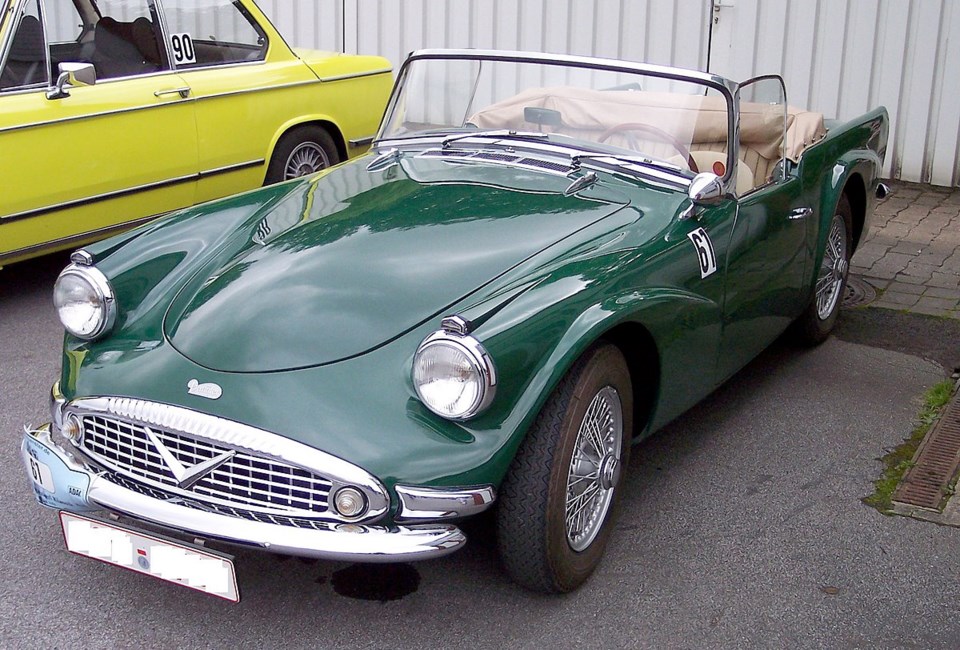The Daimler name goes back to the dawn of automotive history, when Germans Karl Benz and Gottlieb Daimler introduced what were recognized as the first true internal-combustion engine automobiles in 1886.
Daimler and partners soon formed a car-building company, and in 1893, the Daimler Motor Syndicate Ltd. — later Daimler Co. Ltd. — was established in Coventry, England, to manufacture Daimlers under licence.
The English company gradually began developing and manufacturing cars of its own design. In 1900, the Prince of Wales, later King Edward VII, bought a Daimler and granted Daimler a royal warrant in 1902. It began a British Crown association that lasted for 50 years.
Befitting royalty, Daimlers evolved into mostly conservative vehicles, exemplified by fitting the quiet Knight sleeve-valve engine in 1909.
Daimler fell into financial difficulty, and in 1910 was purchased by Birmingham Small Arms, better known for motorcycles than cars. Daimler continued with luxury cars, introducing the almost-silent sleeve-valve 12-cylinder Double Six Daimler in 1927, a car much favoured by the royal family.
After Second World War contributions that included armoured cars and aero engines, Daimler resumed building cars in its conservative way until the 1950s, when it was reorganized to have a broader market view. It introduced a sporty Conquest model aimed at the Jaguar XK120, but being overpriced and underpowered, only 119 coupes and convertibles were built before production ceased in 1957.
But Daimler wanted to continue trying to exploit the rising popularity of British sports cars in North America, and entered the real sports-car business in 1959.
BSA motorcycle engineer Edward Turner developed two new V-8s, a 2.5-litre for the sports car and a 4.5-litre for big sedans. Having little sports-car background, Daimler engineers observed what others were doing, particularly Triumph, which was also Coventry-based.
Daimler bought a Triumph that it secretly disassembled and analyzed, so it’s no coincidence that the Daimler and Triumph TR3 had some striking similarities.
The front coil springs and A-arms were the same as the Triumph’s, and the four-speed manual transmission was similar. Daimler later offered an automatic transmission, which the Triumph didn’t, and its four-wheel disc brakes were an advanced feature.
The heart of Daimler’s sports car was Turner’s 90-degree, overhead-valve, 2.5-litre V-8 with cross-flow, light-alloy cylinder heads and hemispherical combustion chambers fed by two SU carburetors.
Styling bore no similarity to the Triumph. A large rounded hood sloped down to a wide, oval, eggcrate grille dominated by a big “V” to advertise the V-8, a rarity in Britain (Rolls-Royce had recently introduced one). The familiar Daimler flutes surrounded the grille, and there were no bumpers.
Styling lines, probably more for body stiffening than character, curved over the front and rear fenders. It was the tailfin era, and Daimler had them, too. While most observers didn’t call the Daimler beautiful, it at least offered the comfort of roll-up windows.
Because large-scale production wasn’t planned, they saved money on metal stamping dies by fabricating the body from fibreglass. This was fairly rare, although the Chevrolet Corvette and Lotus, among others, also used it.
Daimler introduced a pre-production example named the Dart at the New York Auto Show in April 1959. Chrysler Corp. immediately objected. It had already used the Dart name on a concept car and planned to launch a 1960 Dodge Dart production car. Daimler renamed its car the SP250 (for sports and 2.5 litres).
Sales began in the late fall of 1959, and British testers found the engine a delight, but criticised the fibreglass body’s lack of overall stiffness and poor workmanship. The SP250 suffered badly from cowl shake, and Autocar’s tester was surprised when the driver’s door popped open twice during hard turns.
The SP250 suffered the same criticism in North America. In a March 1960 test, Road & Track found cowl shake their biggest criticism, but called the V-8, “without a doubt the outstanding feature of the machine.”
The engine developed 140 horsepower at 5,800 rpm and 155 lb.-ft. of torque at 3,600, and propelled the 1,025-kilogram SP250 to 100 km/h in a respectable 9.1 seconds. Top speed was 196 km/h.
The SP250 got off to a somewhat slow start, in part because of the quality problems with the body. Then in 1960, BSA sold Daimler to Jaguar, whose priority was its new E-type, whose launch was just months away.
In spite of its emphasis on the E-Type, Jaguar did upgrade the SP250 by stiffening the frame and body and making bumpers standard equipment. It was further improved in 1963, but its early poor-quality reputation seemed to plague it to the end. This came quietly in mid-1964 after just 2,645 had been built, ending Daimler’s sports-car endeavours.



